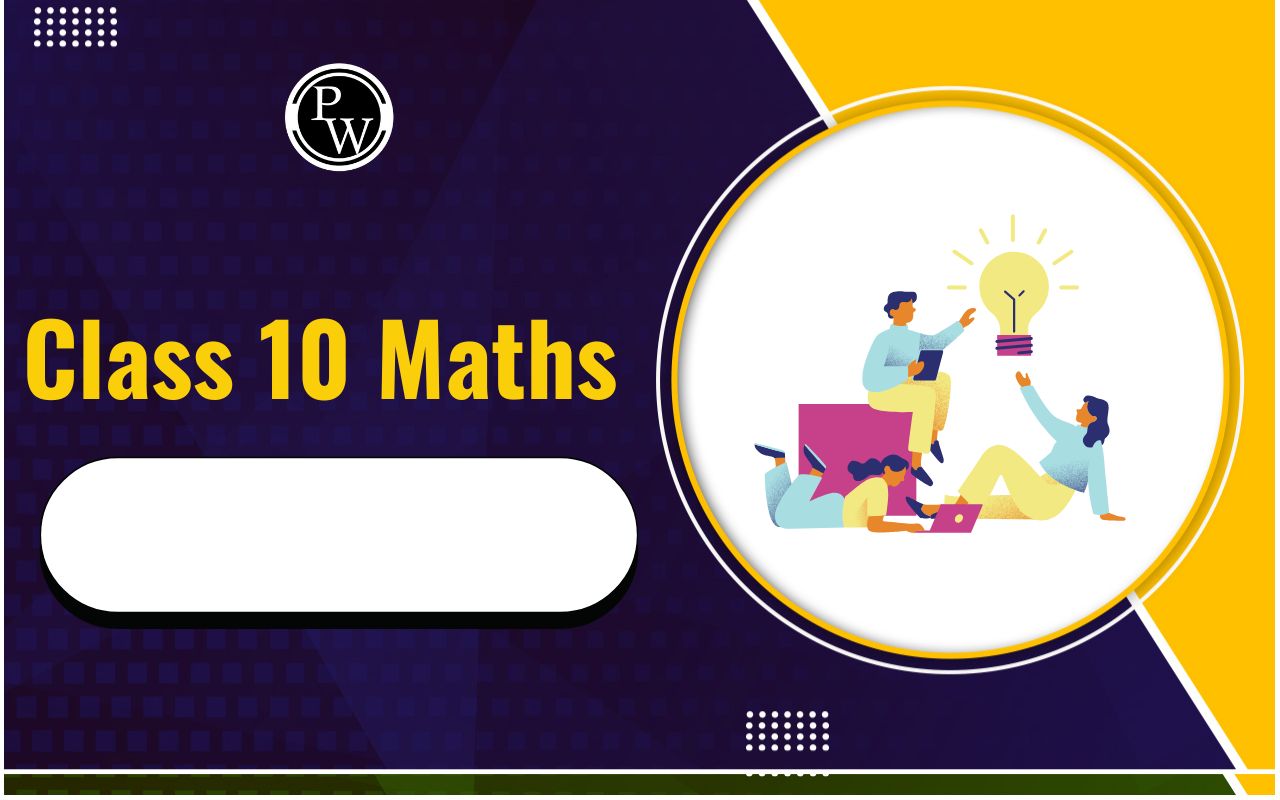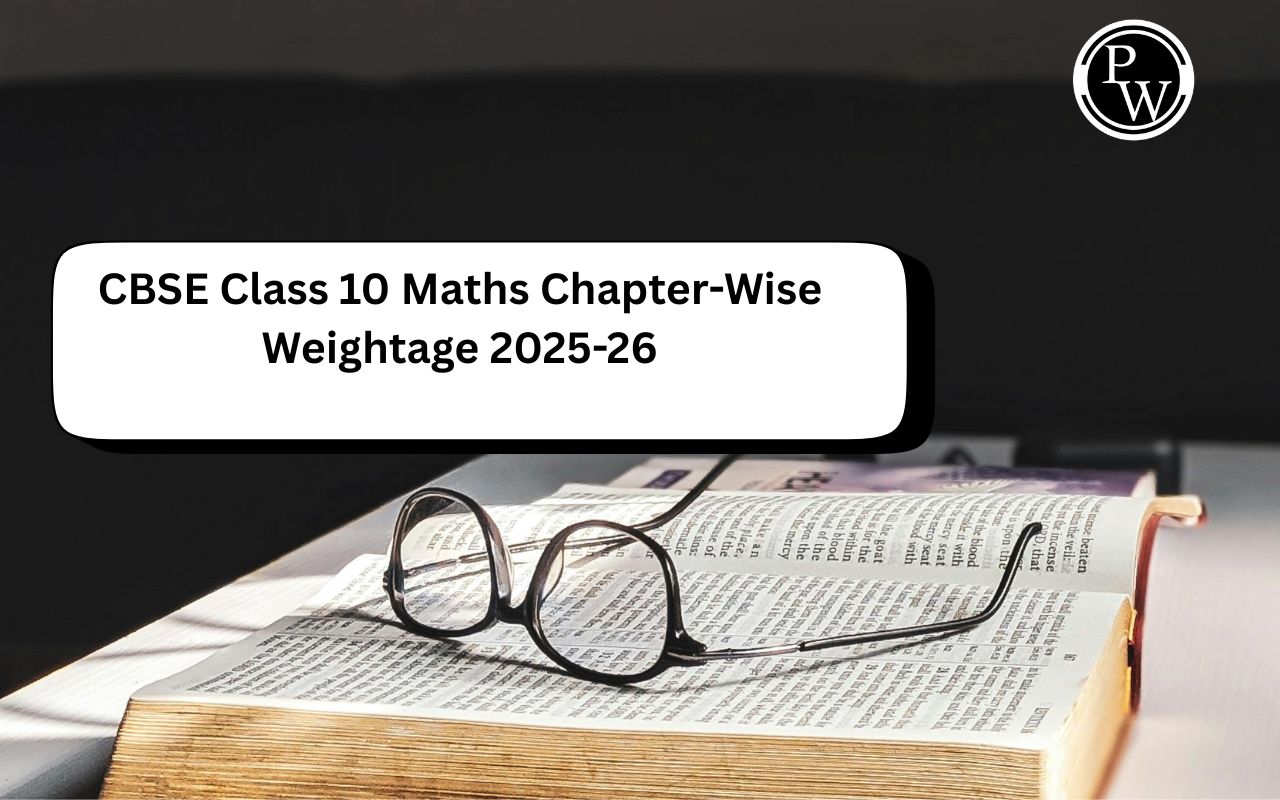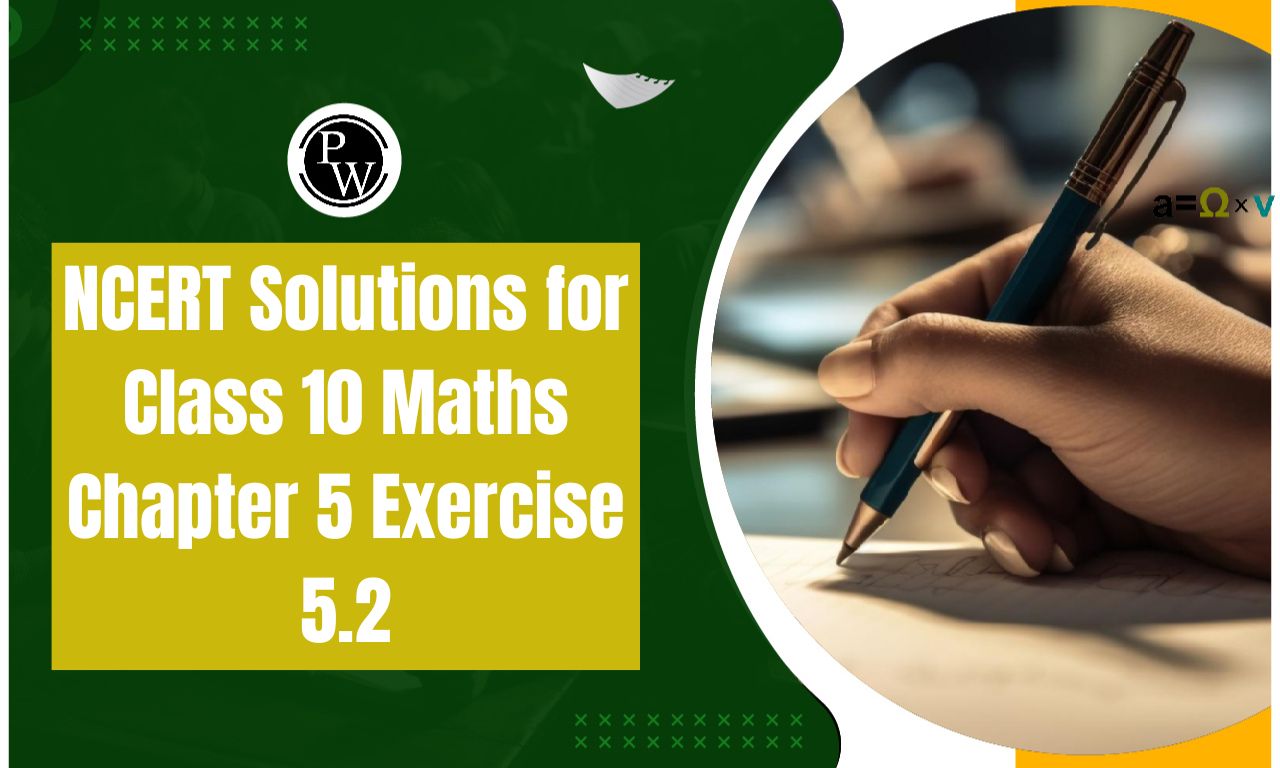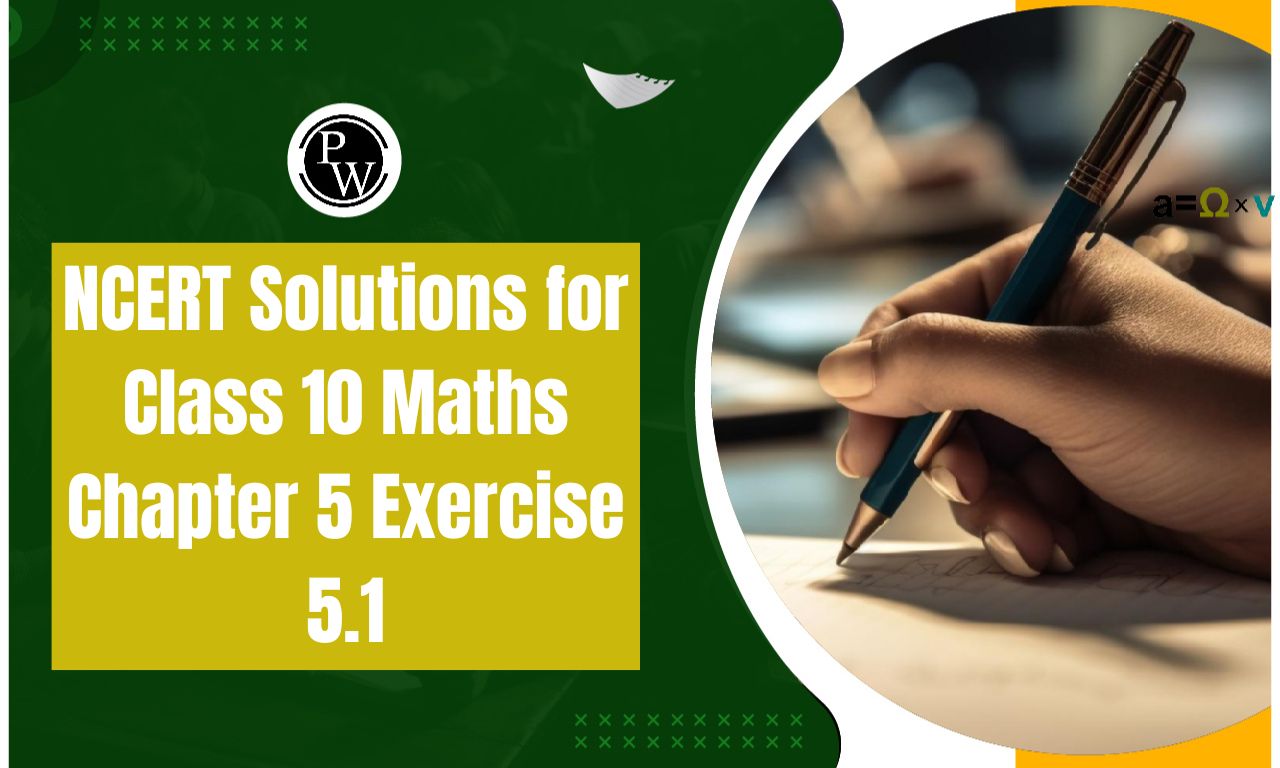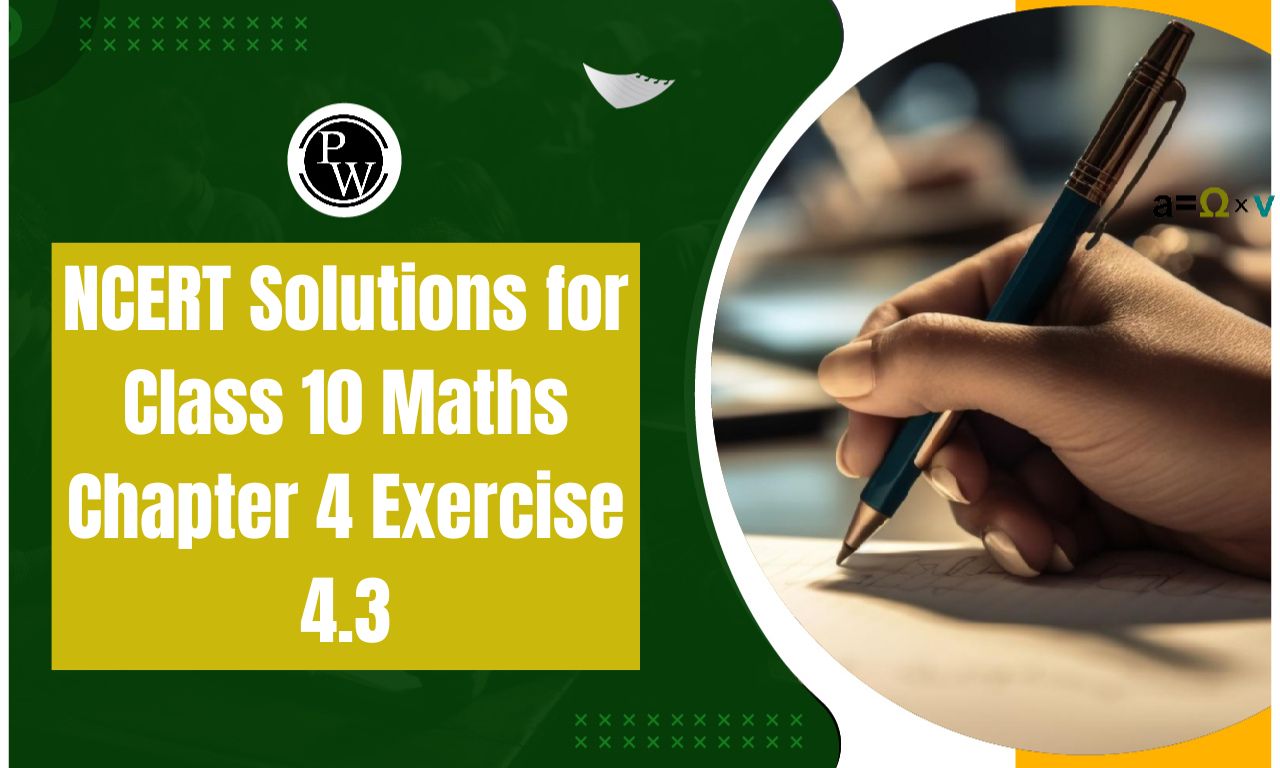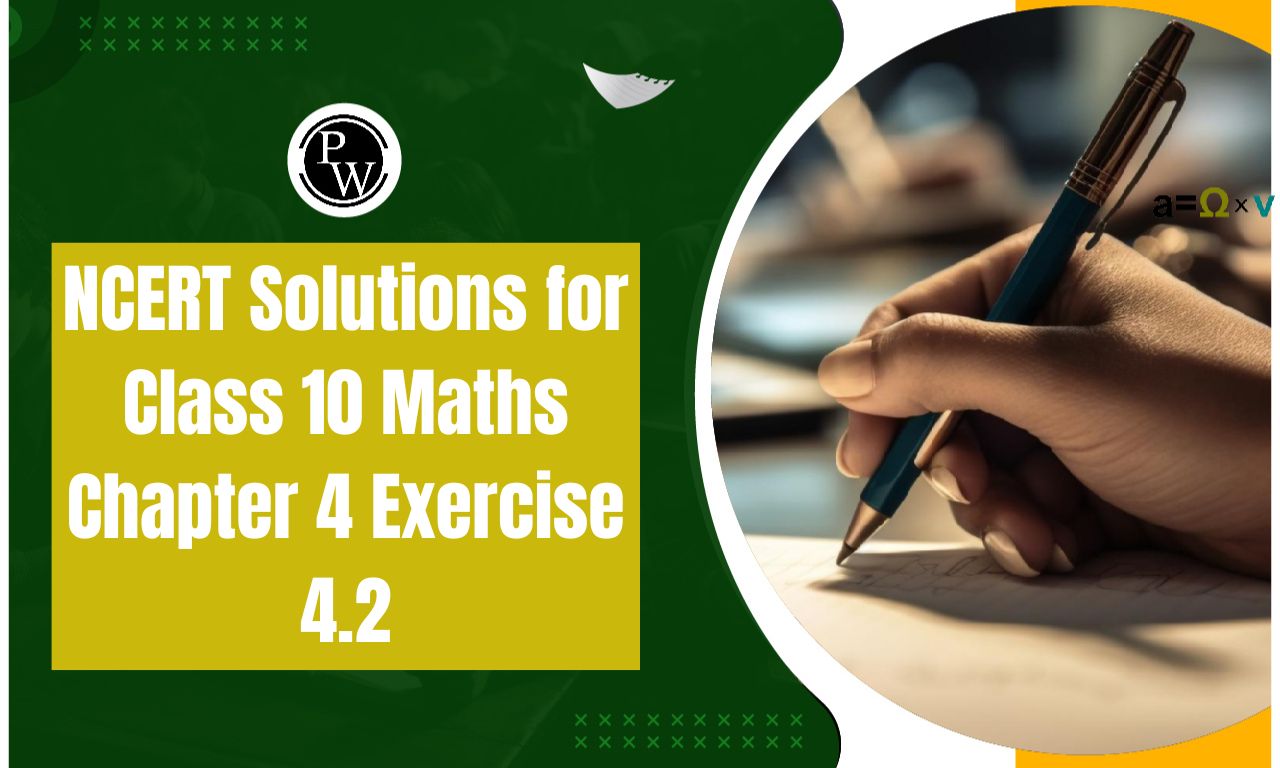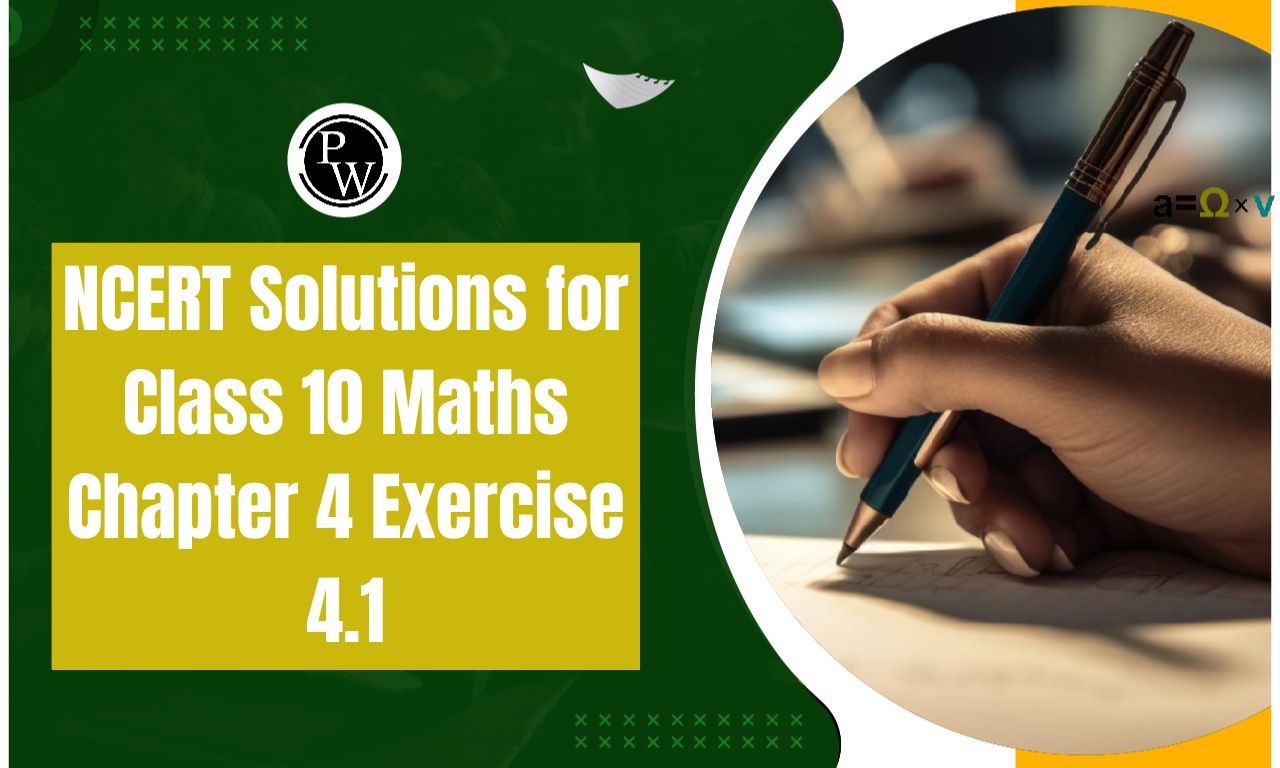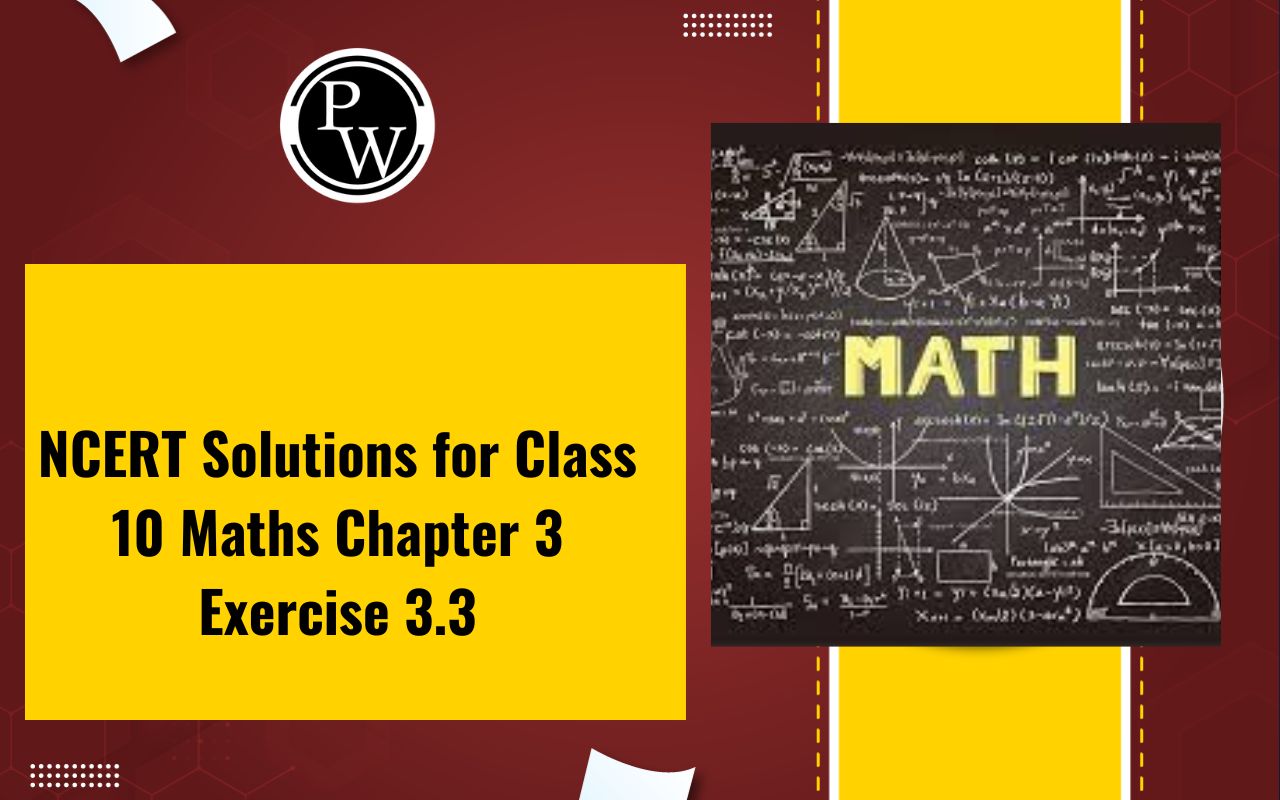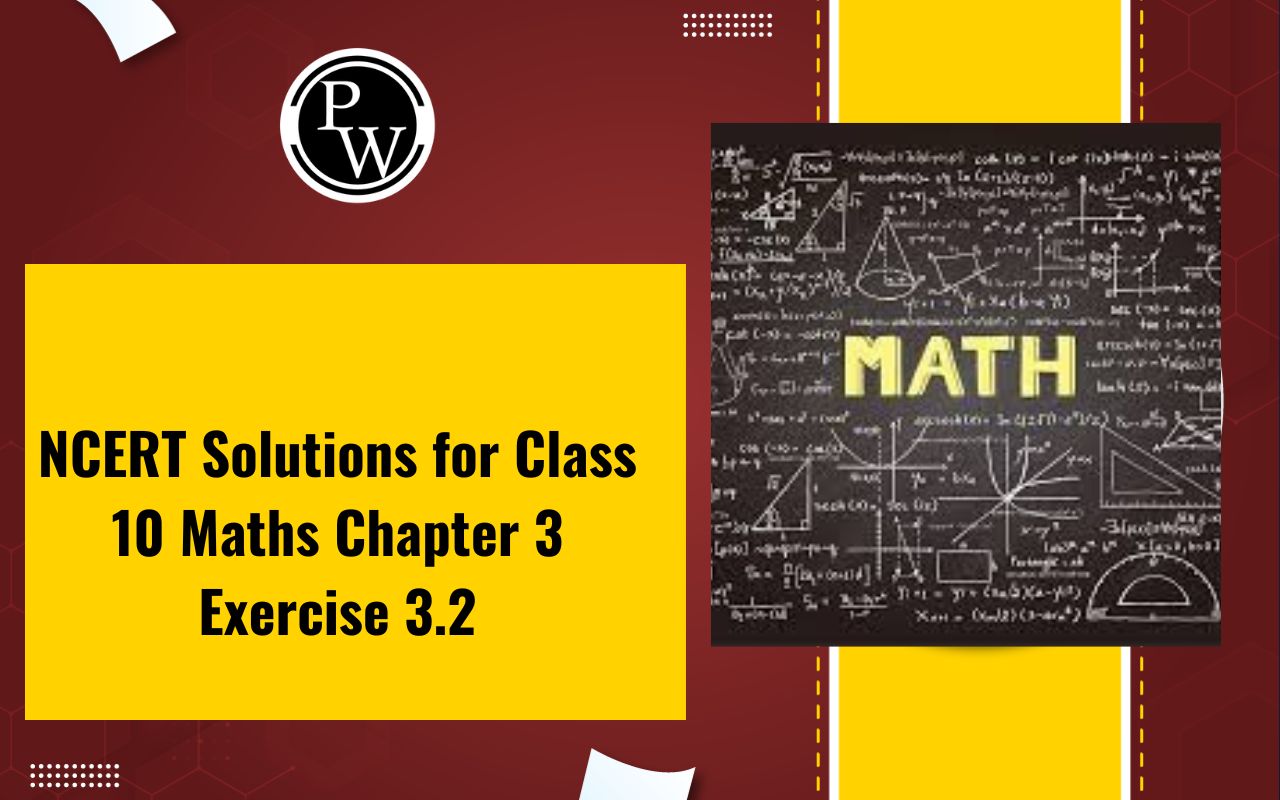
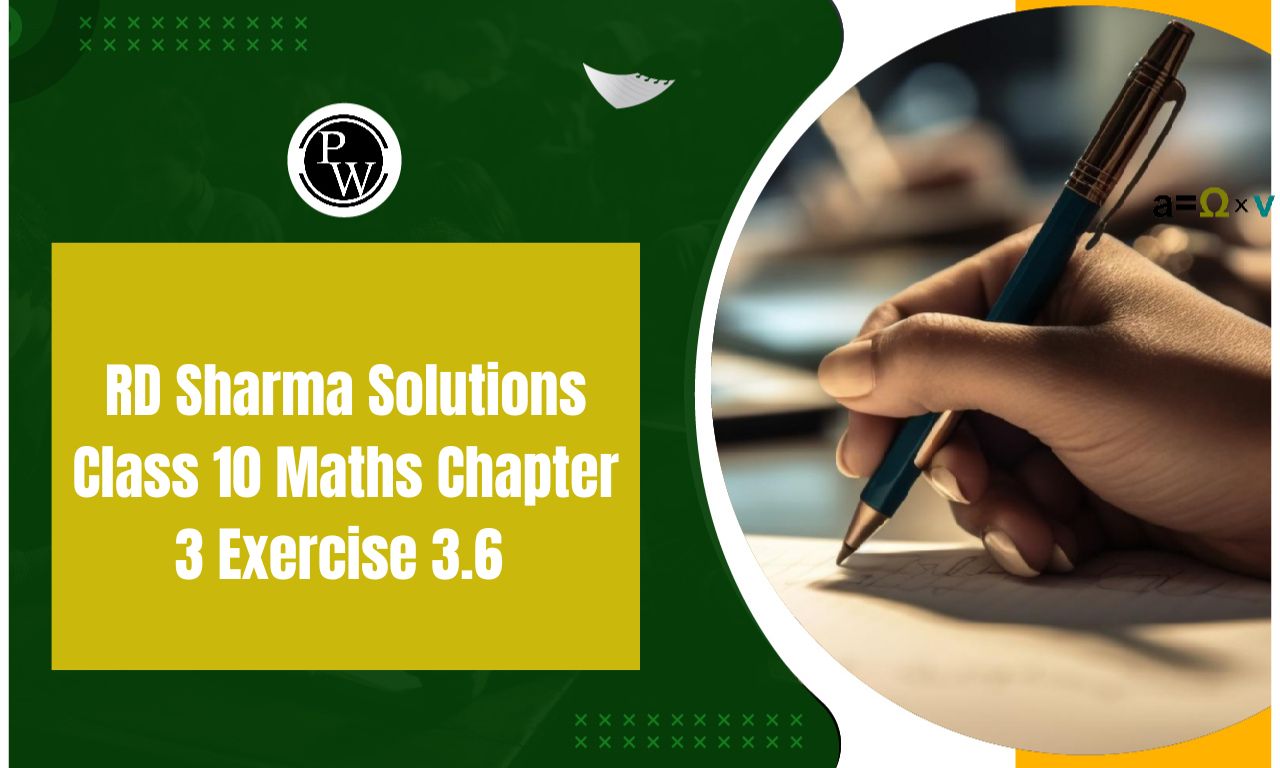
RD Sharma Solutions Class 10 Maths Chapter 3 Exercise 3.6: Chapter 3, Exercise 3.6 of RD Sharma’s Class 10 Maths focuses on solving pairs of linear equations in two variables using the substitution method. In this exercise, students practice expressing one variable in terms of the other from one equation and substituting it into the second equation.
This substitution transforms the pair of equations into a single linear equation, which can be solved to find one variable's value. Afterward, students substitute this value back into one of the original equations to find the second variable. This method enhances problem-solving skills and deepens understanding of linear equations.RD Sharma Solutions Class 10 Maths Chapter 3 Exercise 3.6 Overview
Chapter 3, Exercise 3.6 in RD Sharma's Class 10 Maths book focuses on solving pairs of linear equations in two variables. This topic is crucial as it introduces students to methods like substitution, elimination, and cross-multiplication, which are fundamental in solving simultaneous equations.Learning these techniques helps students develop problem-solving skills and analytical thinking, which are useful not only in mathematics but also in real-world applications like finance, engineering, and science. Mastery of these methods is essential for higher-level math courses, as it builds a strong foundation for algebra and calculus.
RD Sharma Solutions Class 10 Maths Chapter 3 Exercise 3.6 PDF
Below, we have provided the PDF solutions for RD Sharma Class 10 Maths Chapter 3, Exercise 3.6, covering "Pair of Linear Equations in Two Variables." These solutions break down each question with step-by-step explanations, making it easier for students to understand the methods for solving linear equations. This exercise includes graphical and algebraic techniques to find solutions, helping students gain a strong foundation in handling such problems. Download the PDF for clear and concise guidance.RD Sharma Solutions Class 10 Maths Chapter 3 Exercise 3.6 PDF
RD Sharma Solutions Class 10 Maths Chapter 3 Exercise 3.6 Pair of Linear Equations in Two Variables
Below is the RD Sharma Solutions Class 10 Maths Chapter 3 Exercise 3.6 Pair of Linear Equations in Two Variables -1. 5 pens and 6 pencils together cost ₹ 9, and 3 pens and 2 pencils cost ₹ 5. Find the cost of 1 pen and 1 pencil.
Solution:
Let’s assume the cost of a pen and pencil is ₹ x and ₹ y, respectively. Then, forming equations according to the question, 5x + 6y = 9 … (i) 3x + 2y = 5 … (ii) On multiplying equation (i) by 2 and equation (ii) by 6, we get 10x + 12y = 18 … (iii) 18x + 12y = 30 … (iv) Now by subtracting equation (iii) from equation (iv), we get 18x – 10x + 12y – 12y = 30 – 18 8x = 12 x = 3/2 = 1.5 Putting x = 1.5 in equation (i), we find y. 5(1.5) + 6y = 9 6y = 9 – 7.5 y = (1.5)/ 6 = 0.25 Therefore, the cost of one pen = ₹ 1.50, and so the cost of one pencil = ₹ 0.252. 7 audio cassettes and 3 videocassettes cost ₹ 1110, while 5 audio cassettes and 4 videocassettes cost ₹ 1350. Find the cost of audio cassettes and a video cassette.
Solution:
Let’s assume the cost of an audio cassette, and that of a video cassette be ₹ x and ₹ y, respectively. Then, forming equations according to the question, we have 7x + 3y = 1110 … (i) 5x + 4y = 1350 … (ii) On multiplying equation (i) by 4 and equation (ii) by 3, We get 28x + 12y = 4440 … (iii) 15x + 4y = 4050 … (iv) Subtracting equation (iv) from equation (iii), 28x – 13x + 12y – 12y = 4440 – 4050 13x = 390 ⇒ x = 30 On substituting x = 30 in equation (I), 7(30) + 3y = 1110 3y = 1110 – 210 y = 900/ 3 ⇒ y = 300 Therefore, it’s found that the cost of one audio cassette = ₹ 30 And the cost of one video cassette = ₹ 3003. Reena has pens and pencils, which together are 40 in number. If she has 5 more pencils and 5 less pens, then the number of pencils would become 4 times the number of pens. Find the original number of pens and pencils.
Solution:
Let’s assume the number of pens and pencils is x and y, respectively. Forming equations according to the question, we have x + y = 40 … (i) (y+5) = 4(x-5) y + 5 = 4x – 20 5 + 20 = 4x – y 4x – y = 25 … (ii) Adding equations (i) and (ii), We get x + 4x = 40 + 25 5x = 65 ⇒ x = 13 Putting x=13 in equation (i), we get 13 + y = 40 ⇒ y = 40 – 13 = 27 Therefore, it’s found that the number of pens Reena has is 13. And the number of pencils Reena has is 27.4. 4 tables and 3 chairs, together, cost ₹ 2250, and 3 tables and 4 chairs cost ₹ 1950. Find the cost of 2 chairs and 1 table.
Solution:
Let’s assume the cost of 1 table is ₹ x, and the cost of 1 chair is ₹ y. Then, according to the question, 4x + 3y = 2250 … (i) 3x + 4y = 1950 … (ii) On multiplying (i) with 3 and (ii) with 4, We get, 12x + 9y = 6750 … (iii) 12x + 16y = 7800 … (iv) Now, subtracting equation (iv) from (iii), We get, -7y = -1050 y = 150 Using y = 150 in (i), we find x 4x + 3(150) = 2250 4x = 2250 – 450 x = 1800/ 4 ⇒ x = 450 From the question, it’s required to find the value of (x + 2y) ⇒ 450 + 2(150) = 750 Therefore, the total cost of 2 chairs and 1 table is ₹ 750.5. 3 bags and 4 pens together cost ₹ 257, whereas 4 bags and 3 pens together cost ₹ 324. Find the total cost of 1 bag and 10 pens.
Solution:
Let the cost of a bag and a pen be ₹ x and ₹ y, respectively. Then, according to the question, 3x + 4y = 257 … (i) 4x + 3y = 324 … (ii) On multiplying equation (i) by 3 and (ii) by 4, We get, 9x + 12y = 770 … (iii) 16x + 12y = 1296 … (iv) Subtracting equation (iii) from (iv), we get 16x – 9x = 1296 – 771 7x = 525 x = 525/7 = 75 Hence, the cost of a bag = ₹ 75 Substituting x = 75 in equation (i), We get, 3 x 75 + 4y = 257 225 + 4y = 257 4y = 257 – 225 4y = 32 y = 32/4 = 8 Hence, the cost of a pen = ₹ 8 From the question, it’s required to find the value of (x + 10y) ⇒ 75 +10(8) = 20 Therefore, the total cost of 1 bag and 10 pens = 75 + 80 = ₹ 1556. 5 books and 7 pens together cost ₹ 79, whereas 7 books and 5 pens together cost ₹ 77. Find the total cost of 1 book and 2 pens.
Solution:
Let’s assume the cost of a book and a pen be ₹ x and ₹ y, respectively. Then, according to the question, 5x + 7y = 79 … (i) 7x + 5y = 77 … (ii) On multiplying equation (i) by 5 and (ii) by 7, We get, 25x + 35y = 395 … (iii) 49x + 35y = 539 … (iv) Subtracting equation (iii) from (iv), We have, 49x – 25x = 539 – 395 24x = 144 x = 144/24 = 6 Hence, the cost of a book = ₹ 6 Substituting x= 6 in equation (i), We get 5 (6) + 7y = 79 30 + 7y = 79 7y = 79 – 30 7y = 49 y = 49/ 7 = 7 Hence, the cost of a pen = ₹ 7 From the question, it’s required to find the value of (x + 2y) ⇒ 6 + 2(7) = 20 Therefore, the total cost of 1 book and 2 pens = 6 + 14= ₹ 207. Jamila sold a table and a chair for ₹ 1050, thereby making a profit of 10% on the table and 25% on the chair. If she had taken a profit of 25% on the table and 10% on the chair, she would have got ₹ 1065. Find the cost price of each.
Solution:
Let the cost price of one table and one chair be ₹ x and ₹ y, respectively. So, The selling price of the table, when it’s sold at a profit of 10% = ₹ x + 10x/100 = ₹ 110x / 100 The selling price of the chair, when it’s sold at a profit of 25% = ₹ y + 25y/100 = ₹ 125y / 100 Hence, according to the question, 110x / 100 + 125y / 100 = 1050 … (i) Similarly, The selling price of the table, when it’s sold at a profit of 25% = ₹ (x + 25x/100) = ₹ 125x/ 100 The selling price of the chair, when it’s sold at a profit of 10% = ₹ (y + 10y/100) = ₹ 110y / 100 Hence, again from the question 125x / 100 + 110y / 100 = 1065 … (ii) Re-written (i) and (ii) with their simplest coefficients, 11x/10 + 5y/4 = 1050…….. (iii) 5x/4 + 11y/10 = 1065…….. (iv) Adding (iii) and (iv), we get (11/ 10 + 5/ 4)x + (5/ 4 + 11/ 10)y = 2115 47/ 20x + 47/ 20y = 2115 x + y = 2115(20/ 47) = 900 ⇒ x = 900 – y ……. (v) Using (v) in (iii), 11(900 – y)/10 + 5y/4 = 1050 2(9900 -11y) +25y = 1050 x 20 [After taking LCM] 19800 – 22y + 25y = 21000 3y = 1200 ⇒ y = 400 Putting y = 400 in (v), we get x = 900 – 400 = 500 Therefore, the cost price of the table is ₹ 500, and that of the chair is ₹ 400.Benefits of Solving RD Sharma Solutions Class 10 Maths Chapter 3 Exercise 3.6
Solving RD Sharma's solutions for Chapter 3, Exercise 3.6 on "Pair of Linear Equations in Two Variables" in Class 10 Maths offers several benefits:Enhanced Problem-Solving Skills : This exercise involves different methods to solve pairs of linear equations, such as substitution, elimination, and cross-multiplication. Practicing these methods improves students' ability to choose the best technique for each problem.
Strong Foundation in Algebra : Understanding linear equations in two variables is fundamental for advanced algebra topics. By working through these problems, students build a strong base in algebraic concepts, which are essential for higher mathematics.
Concept Clarity : RD Sharma solutions provide step-by-step explanations, helping students understand each part of the solution. This approach makes it easier for students to grasp concepts and see how different steps relate to each other.
Preparation for Board Exams : This chapter is important in the Class 10 curriculum and frequently appears in board exams. Practicing RD Sharma exercises ensures students are well-prepared for similar problems in exams.
Logical and Analytical Thinking : Solving pairs of linear equations requires logical reasoning and analytical thinking to determine the solution. This improves students' overall problem-solving capabilities and enhances their mathematical reasoning.
RD Sharma Solutions Class 10 Maths Chapter 3 Exercise 3.6 FAQs
When a linear equation in two variables has no solution?
How many solutions does a linear equation have in two variables?
What causes a linear equation to have no solution?
Can linear equations have multiple solutions?

